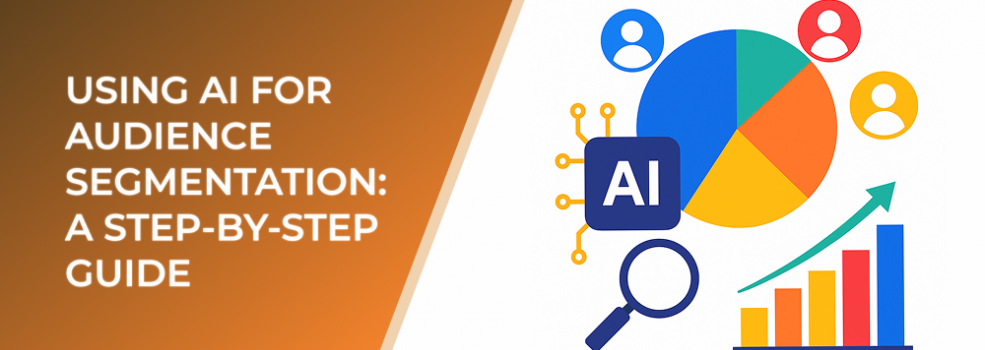AI has transformed the way marketers understand and reach their audiences. This article will walk you through how to leverage AI tools for precise audience segmentation and improved campaign performance.
Audience segmentation has always been a cornerstone of effective marketing. But with the amount of data available today, manual segmentation is no longer enough. Artificial intelligence (AI) enables marketers to automatically analyze behavioral, demographic, and psychographic data to uncover patterns that were previously invisible.

AI in marketing market valued at US $47.32 billion in 2025 with projected growth to US $107.5 billion by 2028 (CAGR 36.6%)
According to Salesforce, 60% of marketers say AI has improved their ability to personalize campaigns, and McKinsey reports that companies using AI for marketing see up to a 20% increase in sales. Here’s a practical guide to using AI for smarter audience segmentation.
Step 1: Define Your Marketing Objectives
Before diving into AI tools, clarify what you want to achieve. Are you looking to increase conversions, reduce acquisition costs, or re-engage inactive customers? Clear goals help the AI model focus on the most relevant audience attributes and behaviors.
Step 2: Collect and Prepare Your Data
AI thrives on data quality. Gather information from your CRM, website analytics, and ad platforms. Key data types include:
-
Demographics: Age, gender, location, income level.
-
Behavioral data: Site visits, purchases, engagement frequency.
-
Interest data: Pages viewed, product categories explored.
Clean and standardize your data to eliminate duplicates or errors. The more accurate the data, the better AI can perform segmentation.
Step 3: Train AI Models for Segmentation
AI tools use machine learning algorithms like clustering and classification to identify audience groups. For example:
-
Clustering algorithms (like K-means) automatically group users by similarities in behavior.
-
Decision trees or neural networks can predict which customers are likely to convert or churn.
This automation allows you to discover segments such as “frequent buyers,” “price-sensitive shoppers,” or “potential brand advocates.”
Step 4: Analyze and Interpret Segments
Once AI has grouped your audience, it’s time to interpret those insights. Look for common characteristics within each segment and align them with your marketing goals. For instance, if a cluster includes high-value customers who respond best to video ads, focus your creative strategy accordingly.
AI-driven insights often reveal patterns human analysis would overlook, such as hidden micro-segments that respond to specific content types or timing.
Step 5: Activate and Optimize Campaigns
After identifying segments, apply them in your ad campaigns. Use AI-powered ad platforms to tailor messages and optimize delivery in real time. Track performance metrics like click-through rate, conversion rate, and customer lifetime value for each segment.
Machine learning models can continually refine segmentation as new data arrives, ensuring campaigns stay relevant and effective over time.
Step 6: Measure Results and Iterate
Success with AI segmentation is an ongoing process. Evaluate performance regularly, feed new data into your models, and adjust your audience definitions based on results. According to HubSpot, marketers who consistently update their segmentation strategies see a 14% higher return on investment compared to those who don’t.
Conclusion
AI takes audience segmentation from a static task to a dynamic, data-driven process. By following these steps, you can achieve more precise targeting, stronger engagement, and improved ROI across campaigns. The future of segmentation is not just automation—it’s intelligent optimization.
You might also like:

